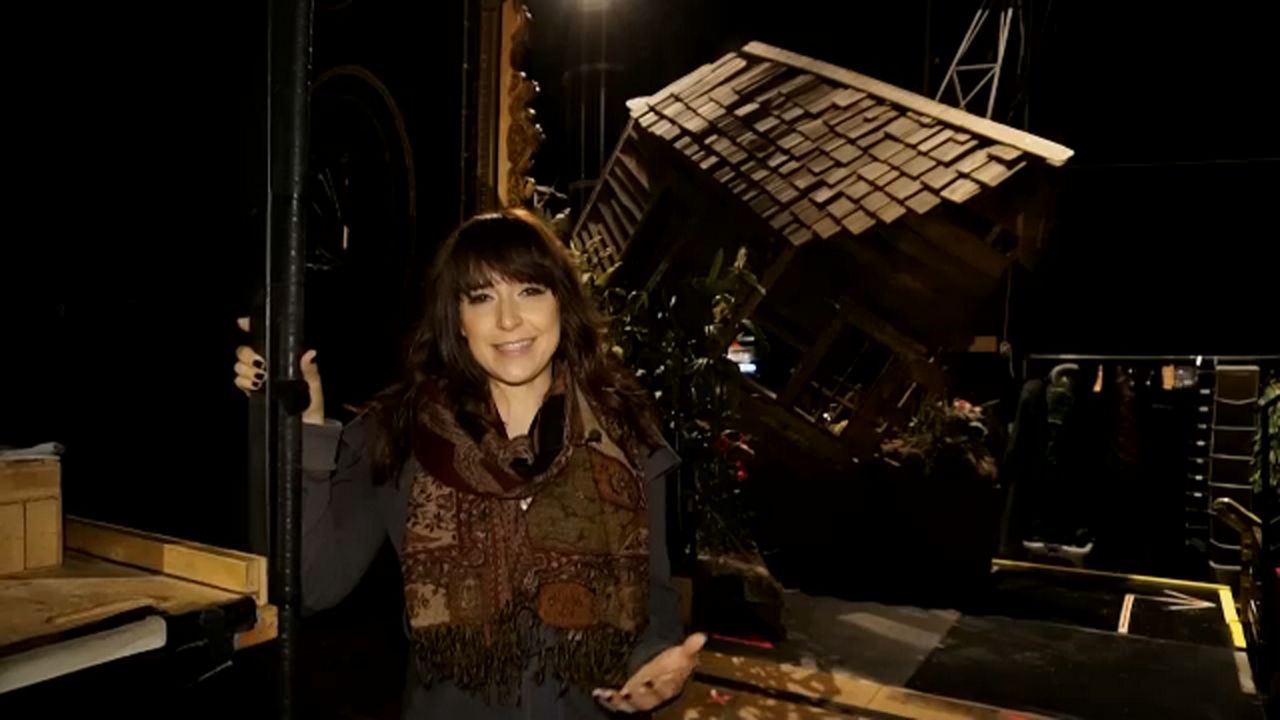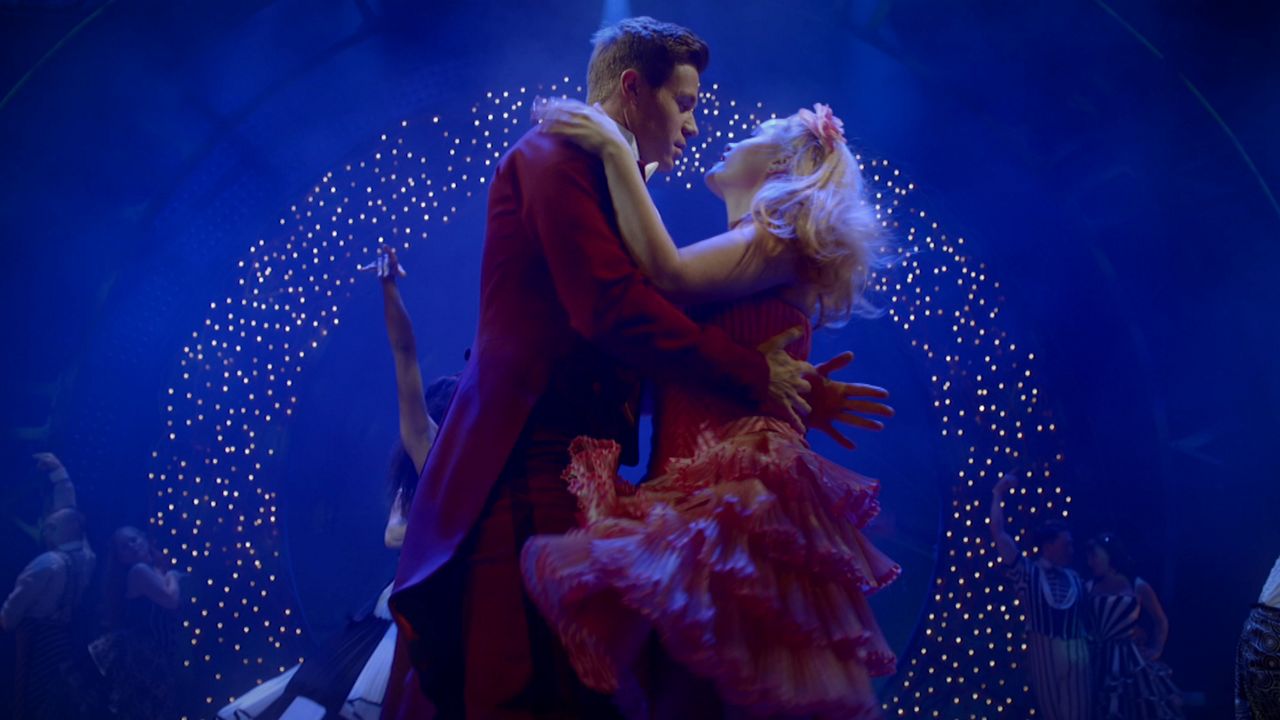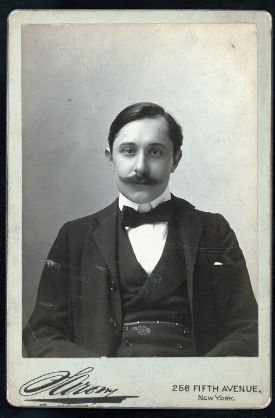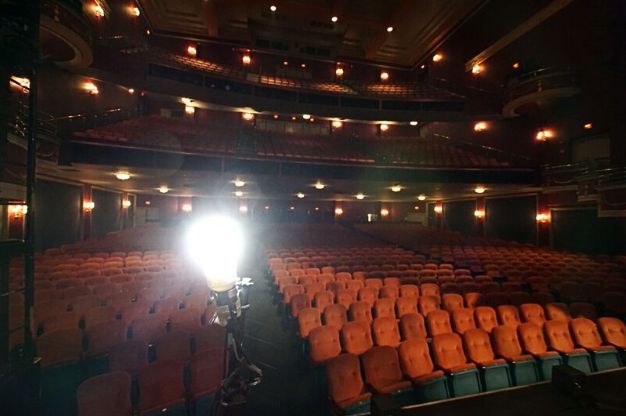Broadway has some long-standing superstitions, from breaking a leg, to not whistling in a theatre, to the use of a ghostlight to ward off spirits. Broadway Up Close Walking Tours owner Tim Dolan offers a Ghostlight Tour, and he showed our Frank DiLella a place where things seem to go bump in the night. Still looking for more chills? Read up creepy stories of the Palace Theatre and the Lyric Theatre!
PALACE THEATRE
“The Death Loop”
When The Palace Theatre opened in Times Square in 1913, it quickly became the most renowned vaudeville theater in America. The old saying went: “you haven’t made it ’til you’ve played the Palace.” Famous acts who played the famed theater include Harry Houdini, Mae West, The Marx Brothers, W.C. Fields, Will Rogers, and even Helen Keller and Annie Sullivan. Our favorite act? Odiva, The Plunging Samoan Nymph. This woman would set up the “largest water tank ever constructed onstage” and perform “fancy diving and feats of grace” while swimming in the tank full of sea lions!
One of the acts featured at The Palace was an acrobatic team called The Four Casting Pearls. Their act featured gymnastics and high-flying feats – with no net. Louis Bossalina, the headliner of the act, was known for “The Death Loop.” He would grab the hands of his partner (who was hanging by his legs from a trapeze) and then Bossalina would be launched into the air, do two somersaults, and then grab his partner’s hands again on the way down. According to sources, on Tuesday, August 27, 1935, the Death Loop “went bad.” As he was launched into the air his hands slipped early. As the half-full theater of 800 watched in horror, Bossalina flew into the wings and plummeted 18 feet to the stage floor. He was taken to the nearby Flowers Hospital on Fifth Avenue, with a fractured pelvis and internal bleeding. Luckily, he survived the incident, and after a lifetime of performing, he died 28 years later in Pennsylvania.
But apparently Bossalina wasn’t done perfecting the “Death Loop.” In the late 60s, stagehands repeatedly noticed a figure in white swinging in the air above them; then the figure would vanish and they would hear a blood-curdling scream. The first few sightings of this white-costumed figure prompted research, and the stagehands unearthed what appears to be the only photo of The Four Casting Pearls – wearing white unitards. After a few similar sightings in the 70s and 80s, Bossalina disappeared for good. Perhaps all these years later, in the glow of the ghostlight, he finally landed the “Death Loop”!
LYRIC THEATRE
“Fitch’s Final Bow”
The Lyric Theatre on 42nd Street is currently being renovated in preparation for the upcoming Broadway bow of Harry Potter And The Cursed Child. As thousands file in each night, few will know about a mysterious sighting in 1909.
Clyde Fitch is nearly unheard of today, but in the early 1900s he was the most prolific playwright of his time. Twice he had four plays on Broadway at the same time – one time he had five running concurrently! His plays grossed an average of $250,000 a year (equivalent to approximately $6 million today) at a time when the average person was working for $1 a day.
On December 21, 1909, over one thousand people filed into the Lyric Theatre for the opening night production of Fitch’s new play The City. Those who attended that specific performance had plenty to gasp about: the play featured the first expletive ever uttered on a Broadway stage: “goddamn.” That night also featured one of the most well-documented ghost sightings in Broadway history. As the cast was taking their final bows, the playwright himself joined them onstage. The only problem? Fitch had died of blood poisoning four months earlier. The cast watched as he appeared to take a bow center stage before disappearing, eliciting gasps and screams from the female audience members for the second time that evening. There was even fainting in the aisles! It appears that nothing could stand in the way of Fitch receiving the grand reactions every playwright loves – not even death!
THE GHOSTLIGHT
In a world full of history and tradition, it comes as no surprise to anyone that actors are a superstitious lot. Broadway is a fickle, emotional business, and actors cling to certain strictures in the hopes of a great performance. Many of today’s superstitions harken back to a more primitive theatrical time when performing was a much more dangerous affair. Fire was always an imminent threat, sets were hazardous, and actors’ lives weren’t yet governed by any unions to provide basic workplace safety.
One superstition, rarely seen by audiences, is front and center every night in almost every professional theater in America: the ghostlight. A skinny pole with a single, glowing light bulb sits onstage overnight. It is commonly believed that it is positioned there to keep the ghosts and spirits away from the performers’ sacred space. As with many of our theatrical superstitions, the full origins of the ghostlight are uncertain and date back to the 1800s.
In the very early 1800s, candles and oil lamps were the norm in theatrical lighting. In 1816, gas lamps were officially installed at the Chestnut Street Theatre in Philadelphia, Pennsylvania, and most theaters on Broadway put gas lighting into use over the next years. Whenever gas lighting was used on the stage, a lone gas lamp was left burning overnight to prevent build up in the gas lines. Built-up gas, if not released, could explode, and in fact many theaters throughout the 1800s burned down due to gas explosions. In 1879, Thomas Edison invented the first electric light bulb, and in 1881, London’s Savoy Theatre became the first fully electrically lit theater. America quickly followed suit utilizing Edison bulbs in the Bijou Theatre in Boston, after which Broadway quickly followed. However, even after gas lamps were replaced with electric bulbs, it appears the tradition of placing a single light center stage at night was too good to abandon. For over one hundred years, this singular light bulb, typically on a pole and enclosed by a small cage, has been placed center stage in professional theaters in America and has come to be known as the ghostlight.
Information Provided by Broadway Up Close Walking Tours
Twitter: @BroadwayUpClose












